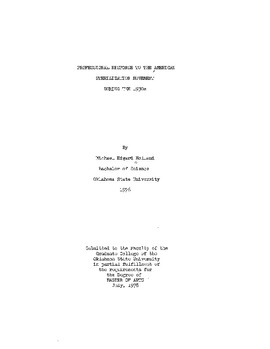| dc.description.abstract | The theory of natural selection as elaborated by Charles Darwin (1809-188~ had a monumental influence on the development of philosophy in the nineteenth and twentieth centuries, Darwin postulated that all species and races were derived from a primitive and common ancestor, Darwin believed that variations had arisen as a natural product of reproduction and the varieties which could survive best in their natural environment would continue to exist and change. The variations which lived made up the extant species, while those variations which were less successful in adapting to their environment became extinct. The idea that organisms in response to natural laws continued to change and become more specialized and advanced appealed to many English Victorians. So influential was Darwin's theory of biological progress by the .mechanism of natural selection that a social philosophy was derived from the biological theory. One of the most important members of the social-Darwinist .school of philosophy was the Eng~ish naturalist Francis Galton (1822-1911), Galton reconciled the Darwinian version of the process of�speciation with the ancient concept of selective breeding of human beings. The result of this synthesip was the idea that man could replace nature as the agent of selection in speciation, Man it was theorized could rapidly accelerate the selection process because he was guided'by reason and purpose as opposed to nature which was directed only by random chance. This social philosophy termed by Galton "eugenics" had its foundations in England, but its most dynamic application was made in the United States: sterilization. The idea of selective breeding of the human race was complementary to the American progressive ideology. State sterilization programs were an important and significant part of the American eugenics movement in the twentieth century. The sterilization movement differed from most other programs of the eugenics movement in that it frequently called for compulsory measures. The movement in method and purpose adapted little to the changing times of the twentieth century. The sterilization controversy was an absorbing struggle between the idea that the state should have great powers, which was popular in the progressive era, and that of the rights of individuals, a concept which was very strong in the 1920s and 1930s. The sterilization movement essentially entered the decade of the 1930s unchanged from the previous three decades. However, a number of important events occurred in the 1930s which affected the status of compulsory sterilization as ~t was p~rceived by the movement's closest observers, the professions which w.ere directly related to the implementation of such a policy. The depression of 1929 served to challenge the naturalist tenet that biological worth was determinable by observing social and economic status. With over seven million American workers out of work during the depression, the idea that money and position dictate worth was unacceptable to many. Dedicated advocates of human sterilization were reaffirmed in their belief that human value was indicated by economic level, by the massive unemployment which resulted from the depression of 1929. Americans were also challenged in their positive attitudes toHard strong government by the rise of a totalitarian state in Germany after 1933. The sterilization program was directly affected by the rise of fascism in Germany because one of the principal doctrines of the new German government was a program of sterilization of those whom it considered to be unfit. As the 1930s progressed and the abuse of the Nazi sterilization laws increased in intensity, many professionals repudiated the movement. The eugenics and sterilization movements never had great public support, but were dominated and supported by members of various professions or expert eugenists. The support of the experts, either of reformers with no particular vocational sJrj_ll but dedicated to improving the human species by sterilization or of those who were members of various professions, was critical to the success of the American sterilization movement. The 1930s have been passed.over by historians as a time when American professionals repudiated the eugenics and sterilization movements; however, the reaction of educated Americans was much more subtle and complex than is usually asserted. The eugenics and sterilization movements were dominated by experts, and to a certain degree so were opposing movements. It is therefore logical to look at the responses of the professions to American sterilization programs. | |
